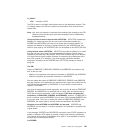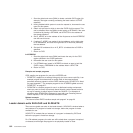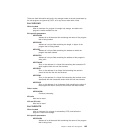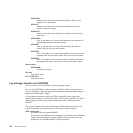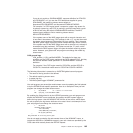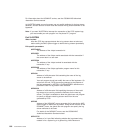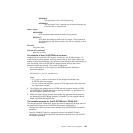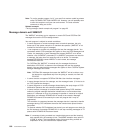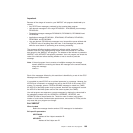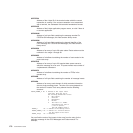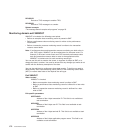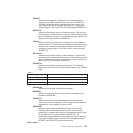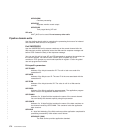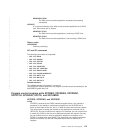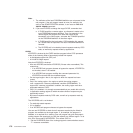Important
Because of the danger of recursion, your XMEOUT exit program should not try to
reroute:
v Any DFHTDxxxx messages, produced by the transient data program.
v User domain messages in the range DFHUS0002 - DFHUS0006, plus message
DFHUS0150.
v Transaction manager messages DFHXM0212, DFHXM0213, DFHXM0304 and
DFHXM0308.
v Application messages DFHAP0001, DFHAP0002, DFHAP0004, DFHAP0601,
DFHAP0602, and DFHAP0603.
v Any user domain (DFHUSxxxx) messages to an intrapartition queue defined with
a TRIGLEV value of anything other than zero, if the messages are produced
while the user domain is performing error recovery processing.
The message definition template contains an indicator called “noreroute”. This
indicator is set on if the message being issued cannot be rerouted to a transient
data queue by the XMEOUT exit program. The address of the indicator is passed to
XMEOUT in the UEPNRTE exit-specific parameter. Your exit program can check the
value of the indicator before deciding whether or not to reroute a particular
message.
Note: If the exit program tries to reroute an ineligible message, the message
domain inhibits the rerouting and issues the message to the console instead,
along with message
DFHME0137
.
Each of the messages affected by this restriction is identified by a note in the CICS
Messages and Codes manual.
It is possible to pass APPLID as an optional parameter in a message. However, the
APPLID that is inserted in a message may not be the APPLID of the current CICS
system. For example, when a CICSPlex SM MAS message is routed to a CMAS,
the APPLID of the MAS system may be passed, therefore the message will contain
the APPLID of the MAS system and not the current system (the CMAS).
Your exit program can suppress or reroute messages by altering the values held in
the addresses pointed to by the UEPMROU, UEPMNRC, UEPMTDQ, and
UEPMNTD fields of the parameter list. These four sets of values (route codes,
number of route codes, transient data queue names, and number of TDQs) are the
only ones that your program can change.
Exit XMEOUT
When invoked
Before the message domain sends a CICS message to its destination.
Exit-specific parameters
UEPTRANID
Address of the 4-byte transaction ID.
UEPUSER
Address of the 8-byte user ID.
Chapter 1. Global user exit programs 169



